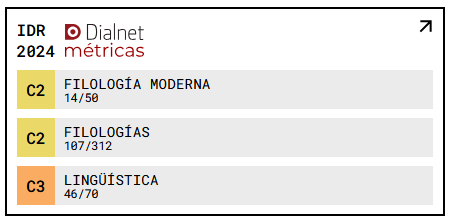Mary Reilly as Jekyll or Hyde : Neo-Victorian (re)creations of Feminity and Feminism
DOI:
https://doi.org/10.18172/jes.154Keywords:
Neo-Victorian, femininity, feminism, Victorian gothic romance, postmodernism, critical f(r)ictionAbstract
In his article “What is Neo-Victorian Studies?” (2008), Mark Lewellyn argues that the term neo-Victorian fiction refers to works that are consciously set in the Victorian period, but introduce representations of marginalised voices, new histories of sexuality, post-colonial viewpoints and other generally ‘different’ versions of the Victorian era. Valerie Martin’s gothic-romance Mary Reilly drew on Stevenson’s novella to introduce a woman’s perspective on the puzzle of Jekyll and Hyde. Almost twenty-years after the publication of Martin’s novel, the newly established field of research in Neo-Victorian fiction has questioned the extent to which Neo-Victorian recreations of the Victorian past respond to postmodern contemporary reflections and ideas about the period. This article aims to examine the ways in which this Neo-Victorian gothic text addresses both the issues of Victorian femininity and feminist principles now in the light of later Neo-Victorian precepts, taking into consideration that Martin’s novel introduces a woman’s perspective as a feminist response to Stevenson’s text but also includes many allusions to the cult of domesticity as a legacy of the Victorian gothic romance.Downloads
References
Bronte, Charlotte. 1996 (1847). Jane Eyre. Oxford: Oxford World’s Classics.
Chase, Karen and Michael Levenson. 2005. “On the Parapets of Privacy”. A Companion to Victorian Literature and Culture. Ed. Herbert F. Tucker. Oxford: Blackwell. 425-437.
Gilbert, Sandra, and Susan Gubar. 2000 (1979). The Madwoman in the Attic: The Woman Writer and the Nineteenth-Century Literary Imagination. New Haven and London: Yale University Press.
Joyce, Simon. 2002. “The Victorians in the Rearview Mirror”. Functions of Victorian Culture at the Present Time. Ed. Christine L. Krueger. Ohio: Ohio University Press.
Kaplan, Cora. 2007. Victoriana: Histories, Fiction, Criticism. Edinburgh: Edinburgh University Press.
Kucich, John and Dianne F. Sadoff, eds. 2000. Victorian Afterlives: Postmodern Culture Rewrites the Nineteenth-Century. London and Minneapolis: University of Minnesota Press.
Lepine, Anna. 2009. “Hyde and Seek in an Age of Surveillance: Stevenson’s The Strange Case of Dr. Jekyll and Mr Hyde and the BBC’s Jekyll”. Neo-Victorian Studies 1.2 (Winter): 78-102.
Light, Alison. 1997.“‘Returning to Manderley’: Romance Fiction, Female Sexuality and Class”. Reading Popular Narrative: A Source Book. Ed. B. Ashley. 222-226.
Llewellyn, Mark. 2008. “What is Neo-Victorian Studies?” Neo-Victorian Studies 1.1 (Autumn): 164-185.
Martin, Valerie. 2003 (1990). Mary Reilly. London: Abacus.
Michie, Helena. 2005. “Under Victorian Skins: The Bodies Beneath”. A Companion to Victorian Literature and Culture. Ed. Herbert F. Tucker. Oxford: Blackwell. 407-424.
Rank, Otto. 1997. “The Double: A Psychoanalytical Study” (1914). Reading Popular Narrative: A Source Book. Ed. Bob Ashley. London and Washington: Leicester University Press. 164-166.
Showalter, Elaine. 1986. “Towards a Feminist Poetics”. The New Feminist Criticism: Essays on Women, Literature and Theory. Ed. Elaine Showalter. London: Virago. 125-143.
Stevenson, Robert Louis. 1994 (1886). The Strange Case of Dr. Jekyll and Mr.Hyde. London: Penguin Popular Classics.
Downloads
Published
How to Cite
Issue
Section
License
The authors retain copyright of articles and authorize Journal of English Studies the first publication. They are free to share, redistribute, and/or reprint the article without obtaining permission from the publisher as long as they give appropriate credit to the editor and the journal.
Self-archiving is allowed too. In fact, it is recommendable to deposit a PDF version of the paper in academic and/or institutional repositories.
It is recommended to include the DOI number.
This journal is licensed under a Creative Commons Attribution 4.0 International License














